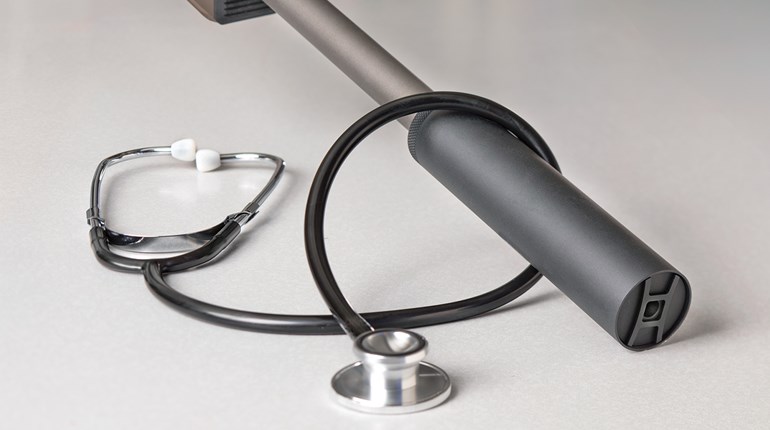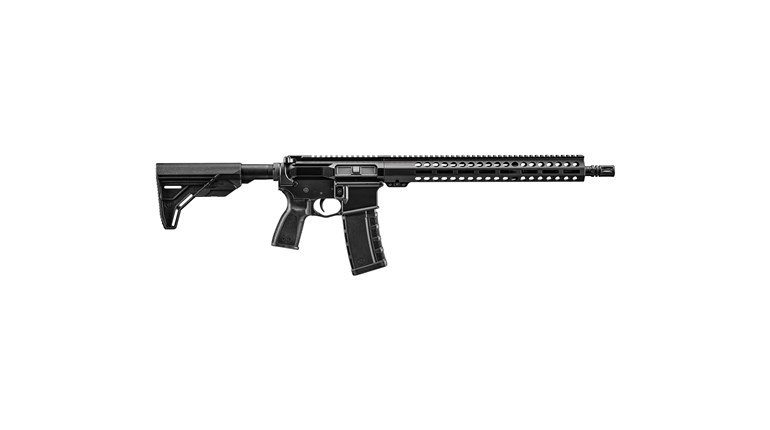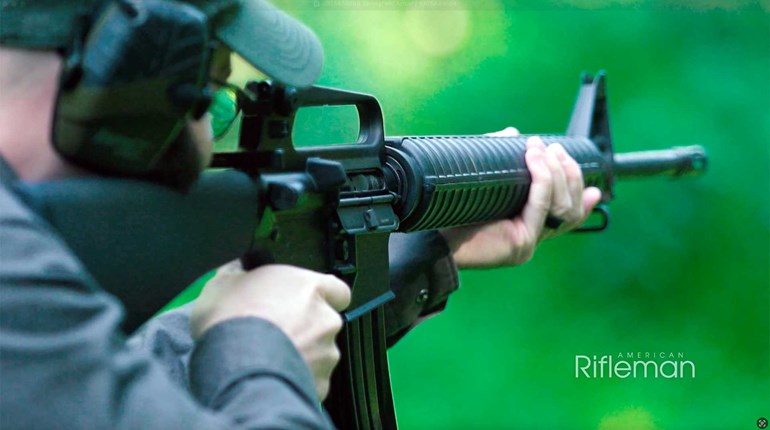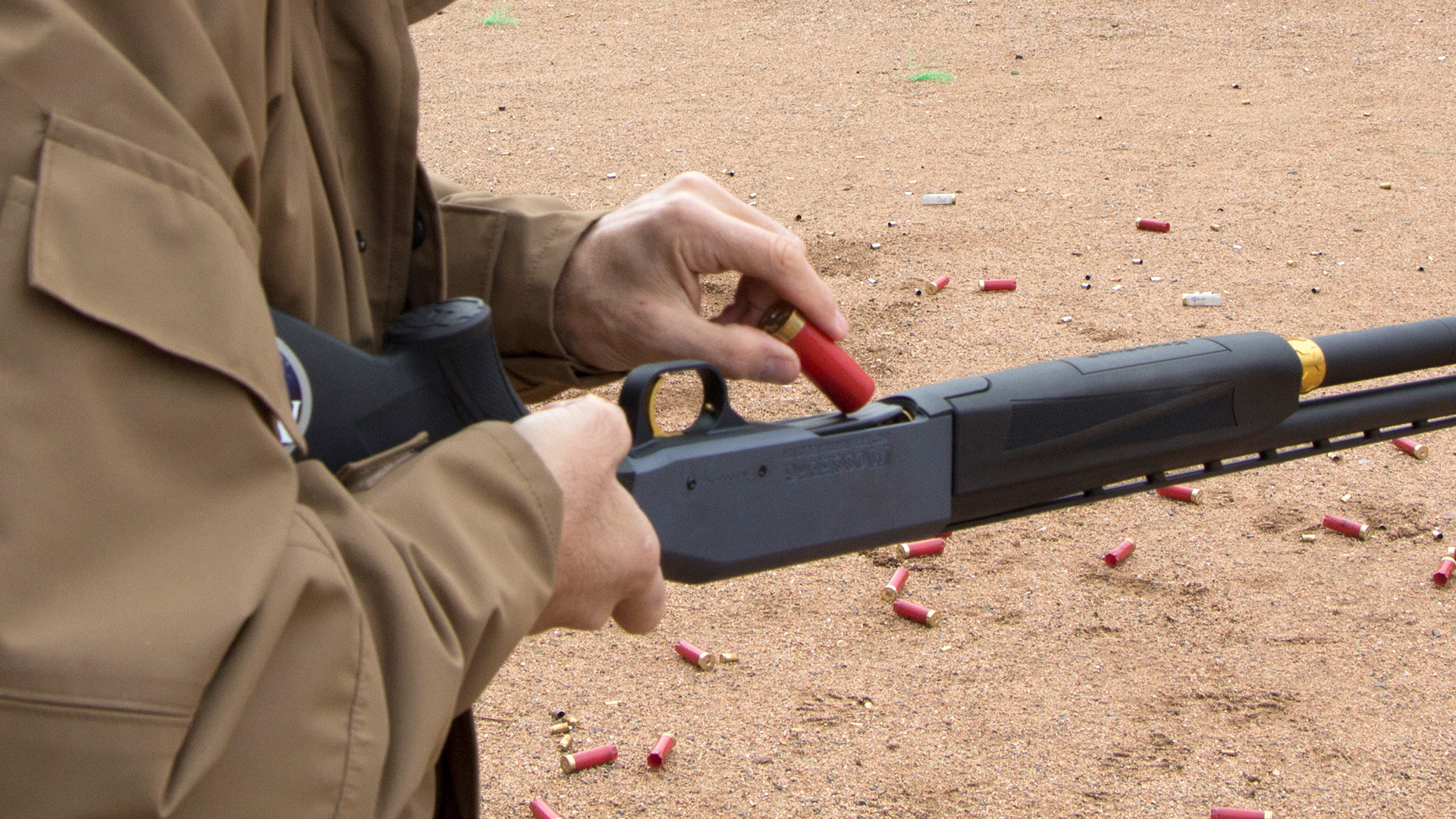
Question: Which of the trajectories shown above is correct for a 55-grain 5.56 NATO round? Answer: All of them—when fired from different barrel lengths.
As consumers, we constantly rely on manufacturer-provided data to help us choose the right ways to spend our dollars. But, regardless of whether we are comparing camera resolutions, fuel-mileage ratings or the calorie counts aimed at our waistlines, published numbers can be misleading or inaccurate. Because the rifle world is no exception to this problem, it pays to view data through discerning lenses.
The trajectory information often printed on the back of ammunition boxes is a common place to run into trouble. These drop and velocity values are typically derived on static test ranges, using long barrels and under set atmospheric conditions. Changing any of those elements, or simpler things like the type of rifling or barrel quality, alters the way the fired bullets move through space. The manufacturer data is useful as a starting reference, but that is as far as it can be taken.
Projectile diameters are another place where things get convoluted real quickly. For example, there are at least half a dozen different diameters for .30-caliber bullets used in relatively common chamberings, such as .308 Win, .30-’06 Sprg., 7.62x39 mm, 7.62x54 mmR and .303 British. If you enjoy being confused, compare bullet diameters for various .22-caliber chamberings from different manufacturers to the numbers published by SAAMI for the same cartridges. Caution: Wait until your head stops spinning to resume shooting.
Ballistic coefficient, or BC, is a useful number that helps determine a projectile’s aerodynamic efficiency. Knowing it, along with velocity, environmental and gun-specific data, helps long-range shooters calculate trajectories. The problem is that there are several methods of calculating BC, with “G1” and “G7” being most common. But, G7 is far more accurate for modern supersonic boattail and VLD bullet designs and therefore preferred. Using a G1 BC usually requires some manipulation of other inputs in order to get a trajectory that is somewhere close to reality. Even when using an accurately calculated BC, you should never fully trust the numbers until you have actually verified them downrange.
Knowing whether or not you can trust the twist rate marked on the outside of a rifle barrel is yet another challenge. The very unscientific cleaning rod-patch-and-ruler method of measuring twist is accurate enough to get one within about a quarter-inch of the actual rate. It is not uncommon for barrel makers to accept variations of up to about a half-inch from the indicated twist rate. Such tolerances are invisible to most shooters, but being too far outside the intended twist rate can cause problems when working at the extreme edges of over- or under-stabilizing projectiles. More serious problems can arise when barrel twist rates are simply mismarked.
Two years ago, a customer sent me a 5.56 NATO-chambered AR pistol upper-receiver assembly that grouped in the 6- to 8-inch range at 100 yards with bullet weights at or greater than 60 grains. The barrel was marked for a 1:7 twist, but after seeing that it shot 55-grain projectiles well, I measured the twist rate and found it to actually be a 1:12-inch twist. The worst part was that the manufacturer would not rectify the problem, but its ridiculous comments during that conversation will have to wait for another day.
Next up in the numbers game is the issue of bore diameter. A pair of 5.56 NATO rifles recently came across my bench that were spinning every bullet fired through them end-over-end through targets at 100 yards. One 16-inch barrel had 20,000+ rounds through it and the other had just 2,000. After performing a detailed inspection and fixing some unrelated issues, I measured the bore dimensions of each gun. According to SAAMI, the bore size for .223 Rem. is .219 inch from land to land. I verified this dimension on several new and lightly used barrels from other makers before measuring the problem barrels. One of the troublemakers measured .226 inch (land to land) several inches beyond the throat and .223 inch through to the muzzle. The other measured .224 inch and .221 inch, respectively. While the bores were tight enough that projectiles eventually took to their rifling, it was obviously not enough to stabilize the bullets. The well-used barrel showed heavy erosion throughout, but the newer barrel looked very good inside and came from a company often listed as a top-selling AR manufacturer in the country.
Type 3 anodizing is a common surface treatment specified for aluminum components. Here again, not every company claiming to meet this standard lives up to it. Types 1 and 2 are anodized to meet different wear and use specifications and do not hold up as well as Type 3. If done correctly, the latter builds up a small layer on top and penetrates slightly into the surface. The resulting exterior has much greater wear and corrosion resistance than raw or painted aluminum. Unfortunately, short of inspecting manufacturer records or testing for a proper hardness of 60 to 70 on the Rockwell C scale, determining whether or not your parts are Type 3 anodized can be difficult.
Gunwriters are far from immune from spouting erroneous numbers, and I am a card-carrying member of the bogus-data club. Fortunately, the eagle-eyed editorial staff nearly always catches my errors, but one manages to skate through their talons every couple of years. A while back, I wrote a short primer on scope mounting and made the mistake of using “foot-pounds” where “inch-pounds” were called for, and the editors, like me, missed that error. Fortunately, a reader quickly informed us of the mistake, which was corrected in online versions. That is not the only time I managed to sneak an error into print, but it is the most memorable to me.
Whether any of the above examples are intentional, honest mistakes or the result of sloppy work, the fact is we all have to do our best to verify published numbers before relying on them for any serious rifle-shooting pursuit.






































